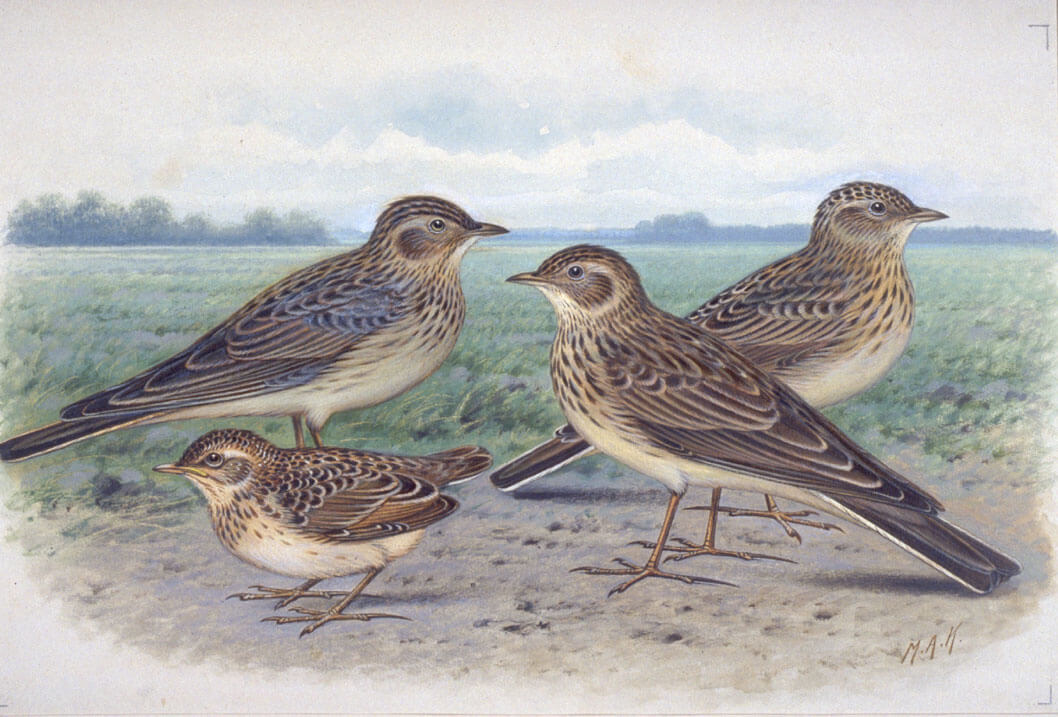The Skylark is almost exclusively found in the fields and meadows: it would be useless to look for it in forests or cities.

Its dull color allows it to hide better on the ground, and it works: it is difficult to see, except when perched on a fence post. A small tuft of feathers forms a crest on the upper part of the head.
During spring, the male spends a significant part of his days singing high in the sky and may do so continuously for many minutes. He then lets himself go down in a descending hovering flight, like a parachute, then rises again in the sky. Thus, the song of the lark accompanies any walk across the fields from March to June.
The nest is built on the ground and, therefore, is regularly crushed by tractors. The lark is originally a steppe species that has adapted to the agricultural landscapes of western Europe, but the recent mechanization of agriculture is causing a steep decline in its populations. Another problem encountered by the lark comes with hunters, who love them too much and kill hundreds of thousands every year in France.

